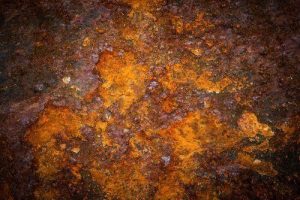 Corrosion is the reversion of metals to their natural state by oxidation, an electrochemical reaction that causes a loss of the metal structure. The site where corrosion occurs is called a corrosion cell.
Corrosion is the reversion of metals to their natural state by oxidation, an electrochemical reaction that causes a loss of the metal structure. The site where corrosion occurs is called a corrosion cell.
Corrosion may take a variety of physical forms. General corrosion occurs when corrosion cells are spread broadly across large surface areas; pitting is when corrosion cells penetrate the metal and take the form of localised cavities or pits.
Damage Caused by Corrosion
Metal ions released by the corrosion reaction often precipitate as oxides, adhering to equipment and water line surfaces. These are called corrosion products.
An accumulation of corrosion products:-
– Reduces heat transfer
– Reduces the ability of treatment chemicals to work properly
Some of the factors, which promote corrosion of water lines and related plant equipment, are:
– Contact between different metals exposed to the water (for example, iron and copper)
– The presence of dissolved gases in the water
– The presence of acidic substances in the water
– Differences in the metal temperature
– Water velocity
Corrosion will attack any metal component of the system, including piping, tanks, pumps, valves and controls. A high corrosion rate will eventually cause failure of the component.
Any type of unscheduled or uncontrolled failure threatens a plant operation with expensive replacement costs and lost production.
As a preventative measure, treatment chemicals called corrosion inhibitors are used to reduce the rate of metal loss, and thus extend the life of the piping and equipment.
A good water management programme controls corrosion by reducing it to an acceptably low rate, rather than completely preventing it. Corrosion is not stopped totally, because to do so would require measures that are often prohibitively expensive.
The loss of metal through corrosion is usually expressed as an average penetration of the metal in mils (thousandths of an inch) per year -mpy. This is a unit that has been adopted over many years and is familiar to (corrosion) engineers. However it is gradually being replaced, especially in Europe, with the metric equivalent of millimetres per year mm/y. To convert mpy to mm/y multiply by 0.0254.
A corrosion rate, for mild steel, of 10mpy (0.254mm/y) is in most systems high, whereas a corrosion rate of 2mpy (0.051mm/y) is usually acceptably low.
Corrosion rates may also be expressed as:
milligram weight loss per decimetre 2per day – mdd – although the use of mdd is now much less common. For mild steel 10mpy is approximately 45 mdd and 2mpy is approximately 11 mdd.
Corrosion inhibitors
Feedwater manufactures a number of corrosion inhibitors which you can find more details about by either looking at our applications pages for the likes of Boiler or Cooling systems or at our water treatment chemicals page.
Or if you are eager to buy inhibitors as soon as possible select chemicals are available to buy online in our water treatment web shop.
Useful information on choosing a corrosion or scale inhibitor can be found here.




